Smart Home Fitness/Gym Equipment Market Size
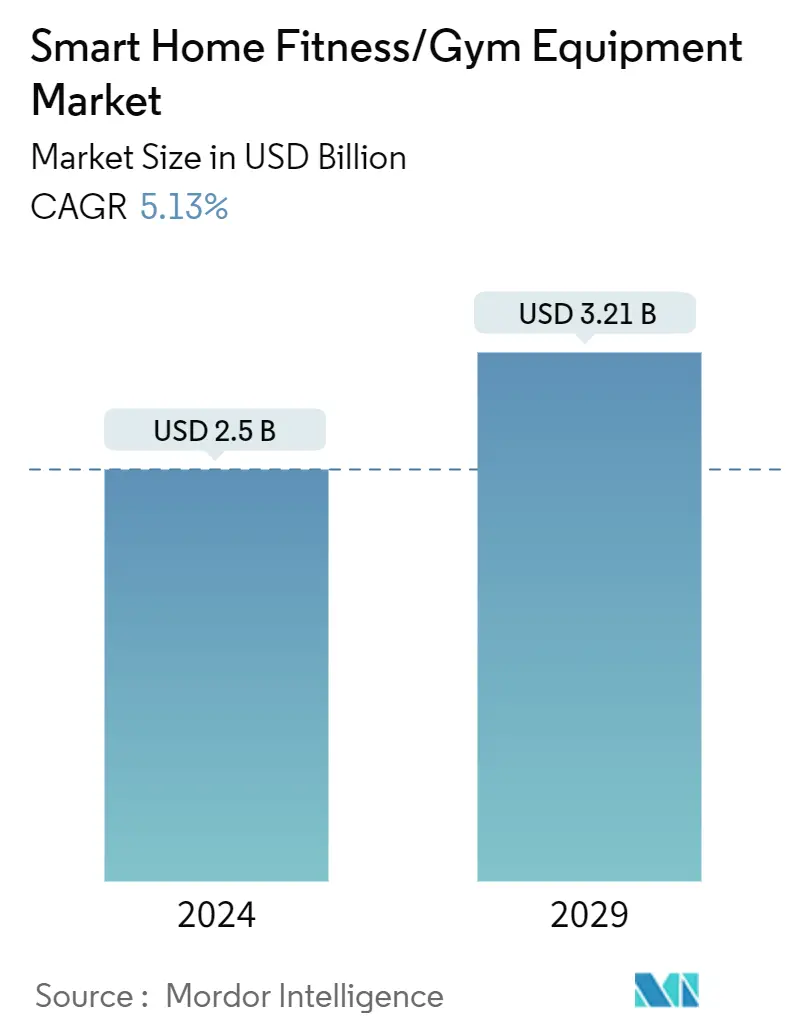
| Study Period | 2020-2029 |
| Market Size (2024) | USD 2.5 Billion |
| Market Size (2029) | USD 3.21 Billion |
| CAGR (2024 - 2029) | 5.13 % |
| Fastest Growing Market | Asia Pacific |
| Largest Market | North America |
Major Players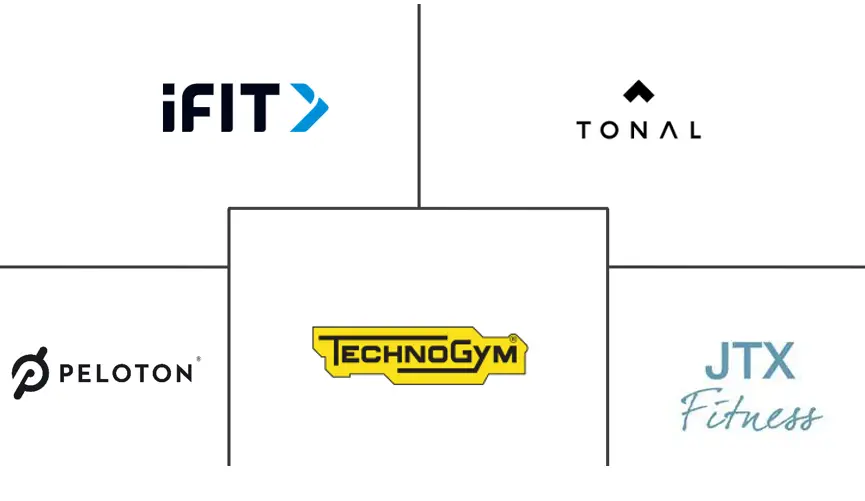
*Disclaimer: Major Players sorted in no particular order |
Smart Home Fitness/Gym Equipment Market Analysis
The Smart Home Fitness/Gym Equipment Market size is estimated at USD 2.5 billion in 2024, and is expected to reach USD 3.21 billion by 2029, growing at a CAGR of 5.13% during the forecast period (2024-2029).
Smart home fitness equipment encompasses devices or machines that allow consumers to exercise at home, thus enhancing their muscle strength, endurance, and weight management. These devices offer a heightened level of engagement, featuring vast libraries of guided sessions that are led by skilled instructors and personalized workouts. These programs are tailored to individual goals and fitness levels. Essentially, they provide the experience of having a personal trainer at home, offering convenience, safety, and privacy. Treadmills, stationary bikes, stair climbers, rowing machines, and ellipticals rank among the favored smart home workout equipment options.
The home fitness equipment market has experienced significant growth in recent years, which is projected to continue. This surge can be credited to various factors, such as the convenience of having exercise tools at home and a rising understanding of the benefits of consistent physical activity. The COVID-19 pandemic increased demand for home workout gear as people shifted to remote work and avoided gyms to reduce infection risks, prompting many individuals to invest in home gym equipment to uphold their fitness and well-being objectives.
The increasing demand for features such as heart rate monitoring, workout duration tracking, distance covered measurement, and calorie expenditure monitoring provided by smart fitness watches and fitness trackers is expected to boost sales of smart fitness products. The substantial integration of Artificial Intelligence (AI) and machine learning technology into these products significantly contributes to the overall market growth. An emerging trend suggests that AI-based personal trainers are poised to become a significant element of at-home fitness equipment. Prominent technology players, including Google and Apple, are actively developing smart wearable devices capable of guiding and supporting users by leveraging health data. These technological advancements are poised to serve as the primary driving force behind the global smart home fitness equipment market in the foreseeable future.
Smart Home Fitness/Gym Equipment Market Trends
Cardiovascular Training Equipment is Expected to Grow at a Faster Rate during the Forecast Period
The dominance of cardiovascular training equipment in the market is fueled by the growing awareness surrounding cardiovascular health. Cardiovascular exercise equipment elevates heart rate, promotes fat loss, and boosts endurance. Engaging in physical activity enhances metabolism and decreases stress levels. The at-home fitness equipment market is primarily led by the cardiovascular training equipment segment, driven by the escalating obesity rates. This equipment is increasingly favored by older individuals seeking to sustain their physical fitness through home-based exercise routines. The expanding elderly population has created a surge in the need for low-impact exercise equipment to help seniors maintain their physical health. Due to this demographic change, elliptical machines, recumbent bikes, upright stationary bikes, and treadmills are experiencing increased demand. According to the US Census Bureau, there are currently 52 million Americans aged 65 and older, a figure projected to reach 95 million by 2060.
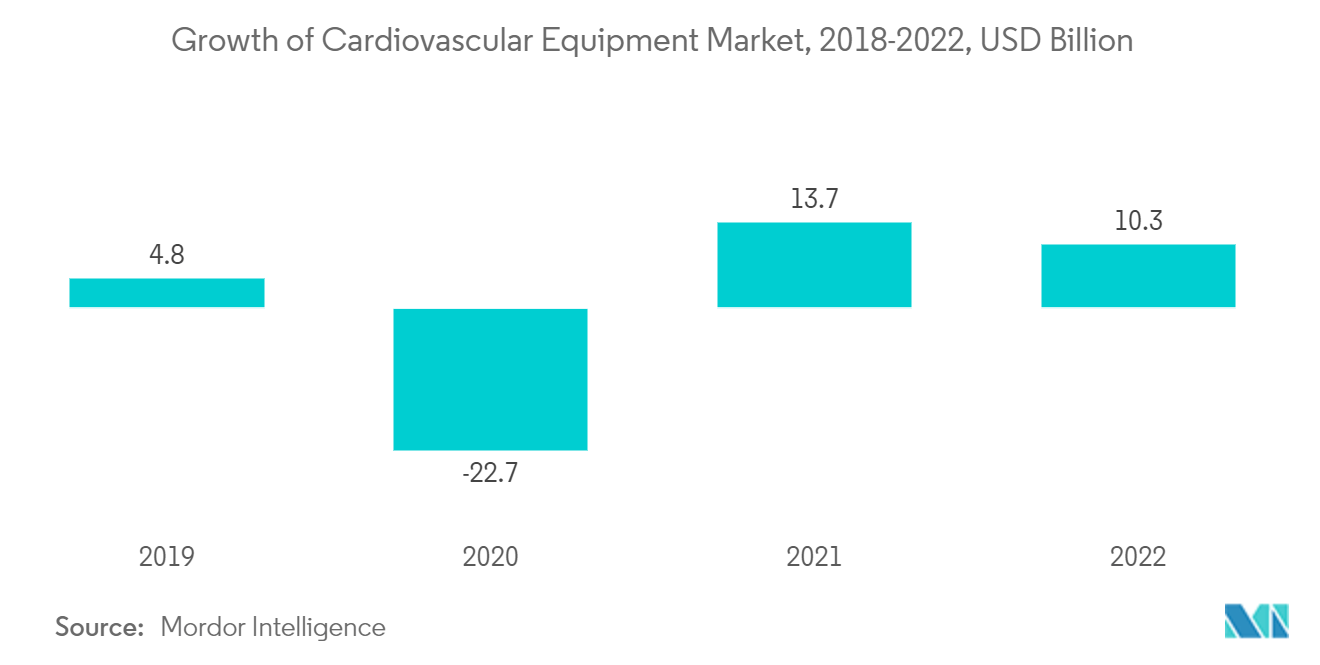
North America Holds the Largest Share in the Smart Home Fitness Equipment Market
North America is poised to claim the largest market share primarily due to a higher prevalence of obesity in the region, leading to increased utilization of fitness equipment. The region faces substantial long-term health risks associated with obesity, including cardiovascular disease, stroke, Type 2 diabetes, high blood pressure, cancer, and various bone and joint issues. Consequently, North America has a heightened demand for weight management services. Given these reports and data-driven insights, consumers in the region are increasingly prioritizing their health and taking proactive measures to improve it. Post-pandemic, many individuals transformed additional spaces in their homes into gyms or activity areas, spurring the purchase of home exercise equipment.
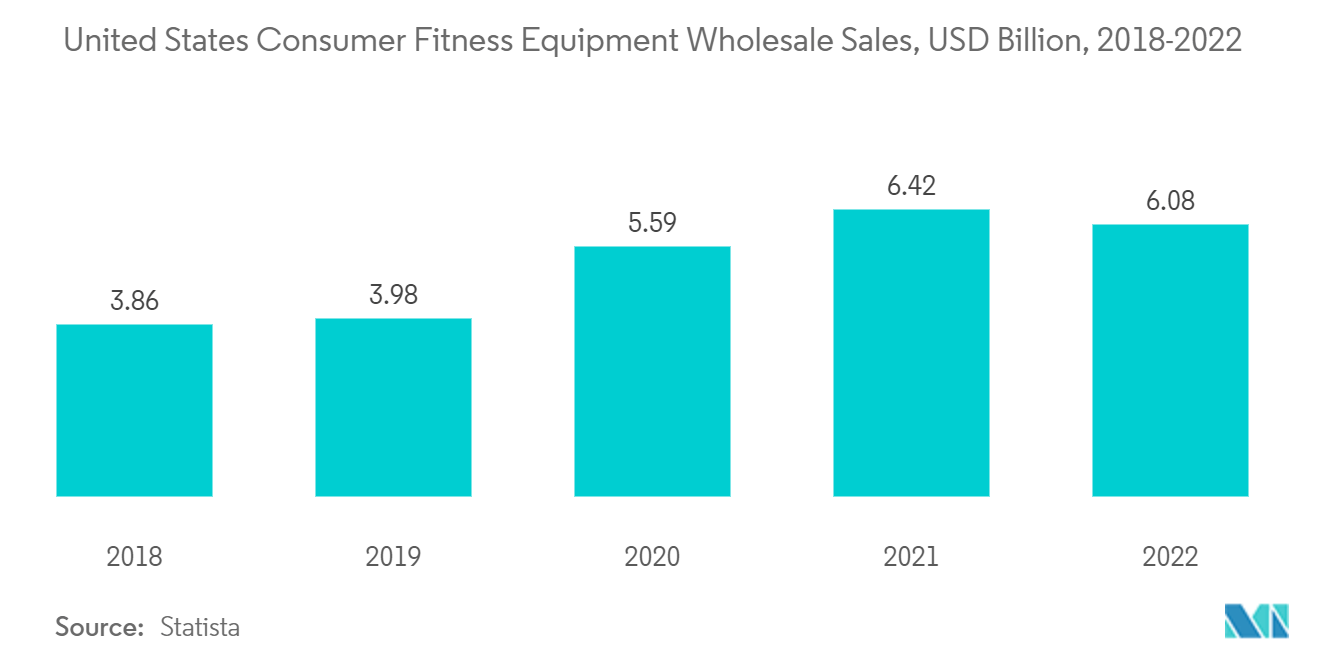
Smart Home Fitness/Gym Equipment Industry Overview
The smart home fitness/gym equipment market is fragmented with many players. Key players in the industry are implementing strategies that involve integrating technology and incorporating smart devices, such as smartphones, tablets, or smartwatches, to meet the growing market demand for smart home fitness/gym equipment. The competitive landscape shows all the strategies, such as acquisitions and mergers, done by players to have the largest market share in the United States. The key players include Tonal System Inc., iFIT Inc., Technogym, Peloton, and JTX Fitness.
Smart Home Fitness/Gym Equipment Market Leaders
-
Tonal System, Inc.
-
iFIT Inc.
-
Technogym
-
Peloton
-
JTX Fitness
*Disclaimer: Major Players sorted in no particular order
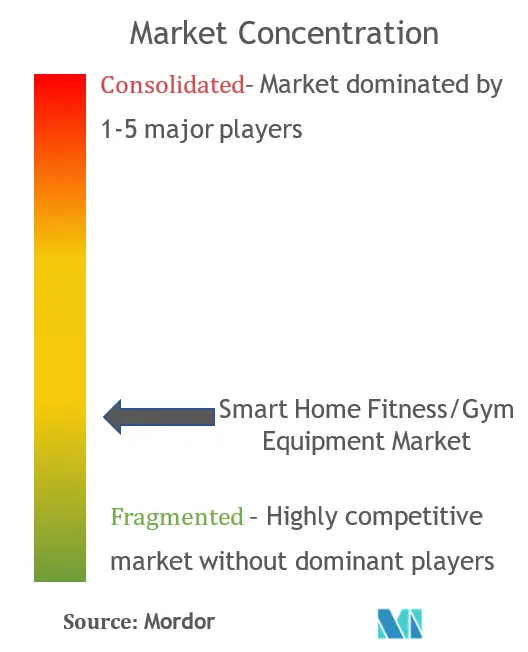
Smart Home Fitness/Gym Equipment Market News
- October 2023: Lululemon entered a five-year partnership with connected fitness specialist Peloton, signing a content, apparel, and community initiative deal. As a result, Lululemon decided to discontinue its mirror-connected fitness service.
- February 2023: iFIT, known as ICON Health & Fitness, strategically expanded its portfolio by acquiring Sweat, a women's health platform, for USD 300 million.
Smart Home Fitness/Gym Equipment Market Report - Table of Contents
1. INTRODUCTION
- 1.1 Study Assumptions and Market Definition
- 1.2 Scope of the Study
2. RESEARCH METHODOLOGY
3. EXECUTIVE SUMMARY
4. MARKET DYNAMICS AND INSIGHTS
- 4.1 Market Overview
-
4.2 Market Drivers
- 4.2.1 Transforming Workouts with Ultimate Convenience for Busy Lifestyles
- 4.2.2 Increasing Awareness and Prioritization of Health
-
4.3 Market Restraints
- 4.3.1 High Product Cost Restrains Market Growth
- 4.3.2 Limited Space in Homes
-
4.4 Market Opportunties
- 4.4.1 Incorporating VR and AR Technologies Increases Market Demand
- 4.4.2 Increasing Focus on Holistic Health Boosts Market Demand
- 4.5 Value Chain Analysis
-
4.6 Industry Attractiveness: Porter's Five Forces Analysis
- 4.6.1 Threat of New Entrants
- 4.6.2 Bargaining Power of Buyers
- 4.6.3 Bargaining Power of Suppliers
- 4.6.4 Threat of Substitutes
- 4.6.5 Intensity of Competitive Rivalry
- 4.7 Insights into Technological Advancements in the Industry
- 4.8 Impact of COVID-19 on the Market
5. MARKET SEGMENTATION
-
5.1 By Product Type
- 5.1.1 Cardiovascular Training Equipment
- 5.1.2 Strength Training Equipment
-
5.2 By Distribution Channel
- 5.2.1 Supermarkets/Hypermarkets
- 5.2.2 Specialized Stores
- 5.2.3 Online
- 5.2.4 Other Distribution Channels
-
5.3 By Geography
- 5.3.1 Asia-Pacific
- 5.3.1.1 India
- 5.3.1.2 China
- 5.3.1.3 Japan
- 5.3.1.4 Australia
- 5.3.1.5 Rest of Asia-Pacific
- 5.3.2 North America
- 5.3.2.1 United States
- 5.3.2.2 Mexico
- 5.3.2.3 Rest of North America
- 5.3.3 Europe
- 5.3.3.1 Germany
- 5.3.3.2 United Kingdom
- 5.3.3.3 France
- 5.3.3.4 Russia
- 5.3.3.5 Rest of Europe
- 5.3.4 South America
- 5.3.4.1 Brazil
- 5.3.4.2 Argentina
- 5.3.4.3 Rest of South America
- 5.3.5 Middle East and Africa
- 5.3.5.1 United Arab Emirates
- 5.3.5.2 South Africa
- 5.3.5.3 Rest of Middle East and Africa
6. COMPETITIVE LANDSCAPE
- 6.1 Market Concentration Overview
- 6.2 Company Profiles
- *List Not Exhaustive
- 6.3 Peloton
- 6.4 Technogym
- 6.5 ICON Health & Fitness Inc.
- 6.6 JTX Fitness
- 6.7 Nautilus Inc.
- 6.8 Life Fitness Inc.
- 6.9 TRUE Fitness Technology Inc.
- 6.10 Precor Inc.
- 6.11 Core Health and Fitness LLC
- 6.12 Tonal System Inc.*
7. MARKET FUTURE TRENDS
8. DISCLAIMER AND ABOUT US
** Subject To AvailablitySmart Home Fitness/Gym Equipment Industry Segmentation
Smart home fitness or gym equipment refers to technologically advanced exercise machines or devices designed for use within a home setting. These devices often integrate digital features such as connectivity to smartphones or tablets, fitness tracking, interactive workouts, and personalized training programs. The smart home fitness/gym equipment market forecast is segmented by product type, distribution channel, and geography. By product type, the market is segmented into cardiovascular training equipment and strength training equipment. By distribution channel, the market is segmented into supermarkets/hypermarkets, specialized stores, online, and other distribution channels, including local retail dealers. By geography, the market is segmented into Asia-Pacific, North America, Europe, South America, and Middle East and Africa. The report offers the market sizing and forecasts for the smart home fitness/gym equipment market in value (USD) for all the above segments.
| By Product Type | Cardiovascular Training Equipment | |
| Strength Training Equipment | ||
| By Distribution Channel | Supermarkets/Hypermarkets | |
| Specialized Stores | ||
| Online | ||
| Other Distribution Channels | ||
| By Geography | Asia-Pacific | India |
| China | ||
| Japan | ||
| Australia | ||
| Rest of Asia-Pacific | ||
| By Geography | North America | United States |
| Mexico | ||
| Rest of North America | ||
| By Geography | Europe | Germany |
| United Kingdom | ||
| France | ||
| Russia | ||
| Rest of Europe | ||
| By Geography | South America | Brazil |
| Argentina | ||
| Rest of South America | ||
| By Geography | Middle East and Africa | United Arab Emirates |
| South Africa | ||
| Rest of Middle East and Africa |
Smart Home Fitness/Gym Equipment Market Research FAQs
How big is the Smart Home Fitness/Gym Equipment Market?
The Smart Home Fitness/Gym Equipment Market size is expected to reach USD 2.5 billion in 2024 and grow at a CAGR of 5.13% to reach USD 3.21 billion by 2029.
What is the current Smart Home Fitness/Gym Equipment Market size?
In 2024, the Smart Home Fitness/Gym Equipment Market size is expected to reach USD 2.5 billion.
Who are the key players in Smart Home Fitness/Gym Equipment Market?
Tonal System, Inc., iFIT Inc., Technogym, Peloton and JTX Fitness are the major companies operating in the Smart Home Fitness/Gym Equipment Market.
Which is the fastest growing region in Smart Home Fitness/Gym Equipment Market?
Asia Pacific is estimated to grow at the highest CAGR over the forecast period (2024-2029).
Which region has the biggest share in Smart Home Fitness/Gym Equipment Market?
In 2024, the North America accounts for the largest market share in Smart Home Fitness/Gym Equipment Market.
What years does this Smart Home Fitness/Gym Equipment Market cover, and what was the market size in 2023?
In 2023, the Smart Home Fitness/Gym Equipment Market size was estimated at USD 2.37 billion. The report covers the Smart Home Fitness/Gym Equipment Market historical market size for years: 2020, 2021, 2022 and 2023. The report also forecasts the Smart Home Fitness/Gym Equipment Market size for years: 2024, 2025, 2026, 2027, 2028 and 2029.
Smart Home Fitness/Gym Equipment Industry Report
Statistics for the 2024 Smart Home Fitness/Gym Equipment market share, size and revenue growth rate, created by Mordor Intelligence™ Industry Reports. Smart Home Fitness/Gym Equipment analysis includes a market forecast outlook to for 2024 to 2029 and historical overview. Get a sample of this industry analysis as a free report PDF download.



